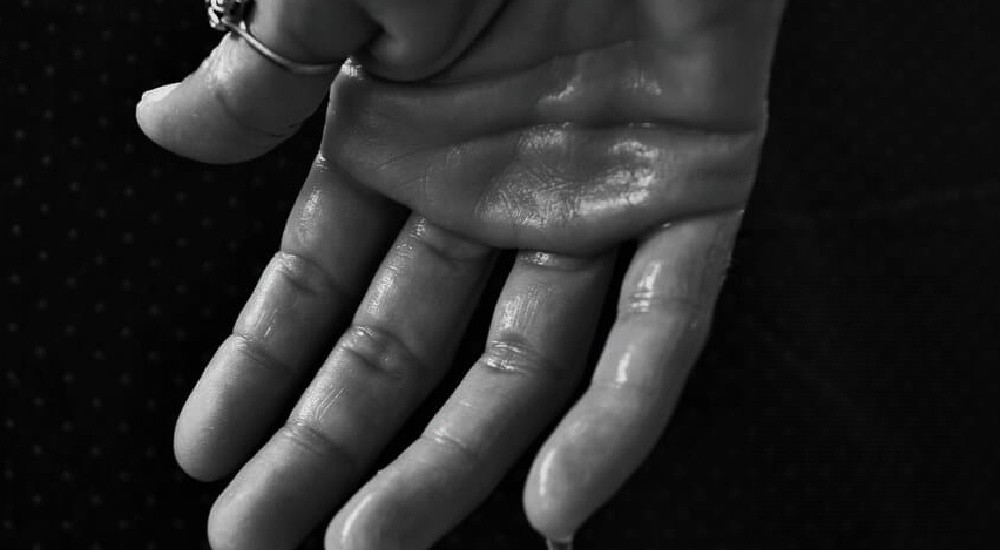Hyperhidrosis - Causes, Symptoms & Treatments
Arrange a Consultation
It’s safe to say the world has gone mad for Botox. It’s our anti-aging savior, and its popularity has exploded in the aesthetics sector with no signs of slowing down.
But although it addresses all of our anti-wrinkle ailments, Botox in Birmingham and the rest of the UK is not just a beauty fad. It has a surprising array of medical uses too. One of those uses is the treatment of hyperhidrosis.
The good news is that Botox delivers awesomely effective treatment for hyperhidrosis. And It is possible to complete the task in less than half an hour.
If you’re looking to reduce wrinkles contact us 0121 514 2385 for a free consultation in our Birmingham clinic to discover if botox is right for you.
What Is Hyperhidrosis
Hyperhidrosis is the medical term for excessive sweating. The condition is defined by the overproduction of sweat.
That doesn’t mean sweating when you’re hot or exercising or sitting in a sauna. It means sweating when you’re just sitting down, sleeping, or walking at a slow pace. It means breaking out in a sweat when you’re trying to do the shopping, drop the kids at school, or just get on with your day.
“Excessive” sweating is quite hard to define, as everyone sweats at different levels. And of course, some levels of sweat are healthy. Sweating is what helps to keep the body cool. It’s when your body sweats when it doesn’t need to cool down that it becomes a problem.
Hyperhidrosis can strike at any time of day, and any time of year. Often, there’s no rhyme or reason for it. This is especially frustrating, as it can be impossible to plan for. But it can be exacerbated by stress, medications, hormonal changes like puberty, pregnancy, menopause, or other health conditions.
What Are The Causes
Hyperhidrosis can be a genetic condition. Dealing with stress can often exacerbate hyperhidrosis. It can also be brought on by menopause or pregnancy. It can also be triggered by medication, or by other conditions, like:
- Diabetes
- Certain types of cancer or heart conditions
- Nervous system disorders
- Anxiety
- Thyroid problems
- Infections

Book a Free Skin Consultation
With me, Doctor Majid Shah at our Birmingham Clinic in the West Midlands. With over 4,000 successful skin treatments around the UK, I guarantee through innovative techniques you’ll get the results you want! look better, feel better, and live better.

How Botox Treats Hyperhidrosis?
Botox stands for botulinum toxin, which is a neurotoxin. Botox injections are a safe and well-established treatment that temporarily paralyzes (or freezes) muscles.
You’ll almost certainly have heard of Botox for the treatment of wrinkles. Botox injected in problem areas like the forehead or under the eyes stops those muscles from moving, which prevents the skin from creasing. Over time, fine lines and deep wrinkles relax, and the skin appears taut and smooth.
Although Botox is most famously used in aesthetics, it has a wide range of uses for medical conditions too. It can be used to treat migraines caused by teeth grinding when it’s injected into the masseter (jaw) muscles. It can treat muscle spasms and lazy eyes.
It’s also an excellent option for treating hyperhidrosis.
When injected into the underarm area, Botox blocks the overactive nerves that send your sweat glands into overdrive. Unlike topical antiperspirants, which deal with the sweat as it breaks onto your skin, Botox prevents the sweat from being produced in the first place.
Botox can also be used to treat sweaty hands and feet (known medically as palmar and plantar hyperhidrosis respectively).
Naturally, because there is very little fat in these areas, receiving Botox injections can be a little more uncomfortable than say the forehead or underarms. But you will be given numbing cream before your doctor or clinician begins, and the appointment only takes half an hour.
Best of all, you’ll be sweat-free for months on end.
Benefits of Botox For Hyperhidrosis
You might have been prescribed pills or instructed to use iontophoresis (applying a weak electrical current across your hands and feet) to temporarily block your sweat glands.
These treatments are all valid and can be very effective. But it can be very frustrating if they’re not working. You might feel like you’re trying everything, and you’re just at your wit’s end.
Botox is that “next level up” treatment. It’s there for you when the prescription deodorants and foot powders and soap substitutes are just not enough.
Botox isn’t permanent, but it is long-lasting. In the underarm area, Botox can last for between 6 to 9 months. You’ll need to revisit after this period to top up.
That means just two half an hour appointments per year can keep you feeling sweat-free and confident.
Usually, the more Botox you have, the more it builds up in your system. That means it will last longer with each application.
Speak to Us About Excessive Sweating
There are enough things to worry about in life. One needn’t fret over the possibility that one’s body odour will offend someone or be the reason one is not offered a job.
If you have symptoms of hyperhidrosis, come and seek my expert help at Dr Majid Shah Aesthetics Birmingham. I have performed more than 2,000 treatments including botox injections for people in Birmingham and London. I can use my expertise to help you address the problem of excessive sweating and develop a plan to help you tackle your problem head-on, and set you on your way to getting your confidence back for good.
“The confidence boost is amazing. I cannot recommend Dr Shah highly enough to anybody who is thinking about having a non surgical procedure”
Trust Pilot Review for Jaw Reduction
FAQ'S
Yes, it does. Botox is a very effective way to treat excessive sweating at the armpits, hands and feet. While it is well known for its anti-aging benefits, it also inhibits Eccrine sweat glands. This stops sweat production in the treated areas.
The effects of Botox are felt from around a week, and on average last for six to nine months. We welcome patients to return for a review. This is usually four weeks after treatment.
Yes! Increased moisture from excessive sweating can become a breeding ground for bacterial growth. Bacteria break down sweat into acids that eventually cause odours. Therefore after treatment, patients feel more confident.
As with many injection treatments, there is some slight discomfort. However, using numbing cream helps.
Aftercare: What should you not do after Hyperhidrosis Treatment?
Yes! Botox is the most conservative treatment for Excessive Sweating. We can achieve an improved quality of life, albeit without surgery.
Aftercare Instructions:
- Do not touch/massage the treated area for 6 hours.
- Stay upright for 3 – 4 hours.
- Refrain from exercise for 48 hours after treatment.
- Do not have any other procedures in the same area.
- Avoid vitamin E, aspirin and alcohol. Do not apply deodorant until the following morning.
Botox for hyperhidrosis is no half measure. It’s extremely effective and will completely stop the production of sweat in your underarms, hands, or feet.
You’ll feel much drier, fresher, and you won’t have to deal with damp or stained clothes. You can drive, type, swim, shake hands, and wear those tight-fitting outfits with total confidence.
Results will be noticeable from the minute you walk out of the clinic.
Aside from the injections being a little uncomfortable, there are very few things to worry about when attending your Botox appointment.
According to NHS figures, less than 10 in 100 people experience pain, redness, or itching after the injections have been made. 4-5 out of 100 people experience something called ‘compensatory sweating’. This is where other areas of your body sweat more to make up for the reduction in sweating in the injected area. This is rare and has been shown to resolve itself within 4 months.
10 out of 100 people may have a headache or a hot flush after their appointment. Less than 1 in 100 people feel nauseous afterward, and less than 1 out of 100 will experience muscle pain or muscle weakness afterward.
If you have any concerns leading up to or after your appointment, do not hesitate to contact us for support.
